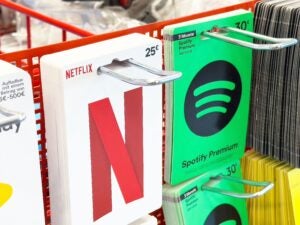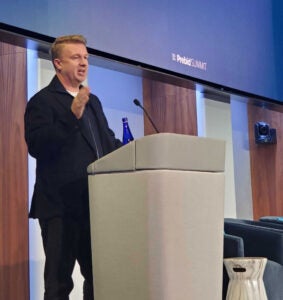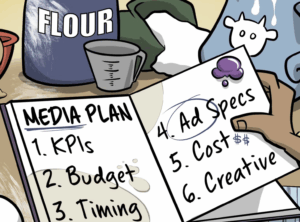Paid search influences offline conversions, but there’s been no good way to measure that impact.
That’s because paid search, a market expected to top $36 billion this year, according to eMarketer, has been primarily used as a direct response channel, said David Shim, CEO and founder of Placed. The Snap-owned location data company released an attribution solution on Tuesday to connect search ad clicks with store visits.
“If you think about search only as direct response – someone clicks on an ad, lands on a landing page and converts – you’re only taking into account the 10% of retail that happens digitally,” Shim said. “But when the conversion happens in a store, not on a site, there’s no way to understand the impact of search on offline.”
Placed measures search clicks using a redirect. But rather than just connecting keyword clicks to landing pages, Placed also ties the clicks to its opt-in location panel of 150 million devices, which generate more than 140 billion latitude and longitude pairs every month. When someone clicks on a keyword, Placed combines modeling and raw location data to map engagement with a search ad to whatever store visit occurs later.
Proving the online/offline connection is critical for retailers, said Marissa Tarleton, CMO of digital coupon aggregator RetailMeNot, Placed’s launch partner for the paid search attribution solution.
“As more advertising and media shift to digital, the attribution of digital to in-store is at the crux of a lot of the issues facing retailers today,” Tarleton said. “They know paid search plays a significant role, but the customer journey has become so nonlinear.”
In a test, RetailMeNot measured a handful of paid search campaigns with 10 retailer partners to see if search impacted in-store traffic, how long it took for a visit to occur and if return on ad spend (ROAS) for paid search could be associated with sales at a physical store.
The paid search campaigns on RetailMeNot’s platform generated four times the ROAS in incremental offline sales.
RetailMeNot could also discern how long it took between someone clicking on a search ad and visiting a store location within a 14-day attribution window. Although most retail store visits attributable to the search campaigns (38%) happened within 48 hours, a fair amount (14%) didn’t take place until the last three days of the two-week window.
Being able to prove the impact of paid search on “the tail” is a helpful bit of data to have on hand, especially in the lead-up to the holiday season as consumers start researching gifts, Tarleton said.
“This supports the fact that search is a critical part of the online-to-in-store journey and shows that brands have an opportunity to influence a decision well in advance of the day of purchase,” she said. “There’s tangible ROI even later in the 14-day window, and we weren’t able to prove that before.”
But just buying keywords isn’t enough to drive people from a search ad into a store, Shim said.
“You need to combine touch points,” he said. “Beyond keywords, you need a landing page and the right messaging. Using a combination is what resonates with consumers.”
Snap acquired Placed in June for $135 million, and it continues to operate independently. The search attribution tool was developed for the broader market and isn’t yet being used by Snap.













